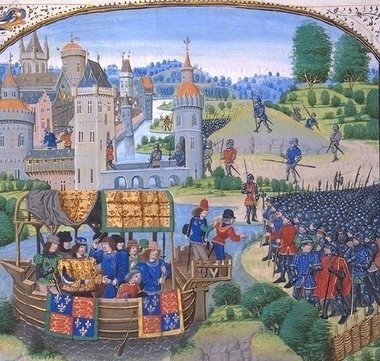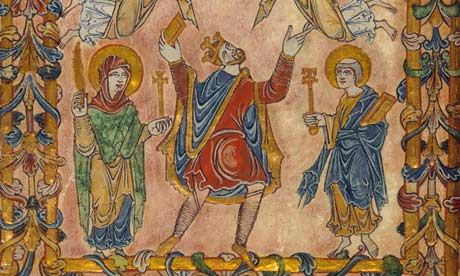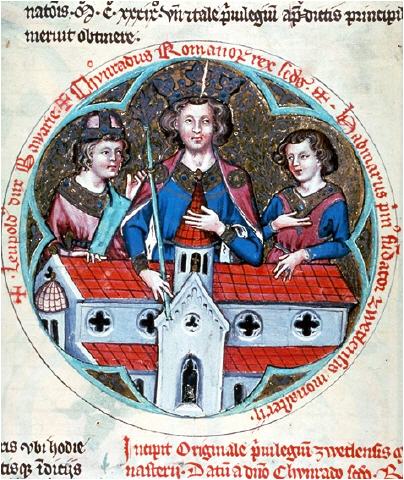The world of a thousand years ago. One thousand years ago our forebears lived in a “dark age.” They themselves did not believe it was that dark and they were only half wrong…
The roofs of peasant cottages in the Dark Ages were tile or shingle, or thatched straw, an efficient rain-shedder but verminous. A hole in the roof served as a chimney. The floor was of hard-packed mud. This, like our adobe, could be surprisingly durable, but it was likely to freeze and thaw, yield to upthrusting ground-water, and return to its original consistency. Sleeping on wet floors was a potent encouragement to rheumatism. The poorer families crowded into a single room together with their farm animals and poultry, insufficiently housebroken.

—Medieval England — despite social stratification, plague and the absence of indoor plumbing — might have been a better place to live than some of today’s Third World countries. ScienceDaily reports a study from the University of Warwick in England found per capita income in the late Middle Ages was roughly the equivalent of $1,000 in 1990 international dollars. That beats modern day countries like Afghanistan, Haiti and Zaire. The study’s authors, however, note that the figure does not reflect the actual distribution of income.—Read More:http://blog.al.com/live/2010/12/science_links_medieval_england.html
The furnishings were scanty- a table,benches or stools, a chest, wooden bowls, mugs and spoons, sometimes a bedstead. Earthenware cooking pots were common. There were no glass mirrors- hence girls were forever staring at quiet pools, to assess their faces and foresee the future. Metals for knives, spades, sickles, axes, shears, nails, skillets, were carefully husbanded. Our peasant ancestors were at least freed from the tyranny of possessions. They owned no more than enough to provide shelter, warmth, clothing, and food, and even that little was sometimes begrudged them. An English abbot told his serfs they owned nothing but their bellies.

—They may have been called the “dark ages”, but a new exhibition at the British Library will aim to show that there were medieval artists producing work that was as remarkably colourful as it was beautiful.
The library has announced details of a winter exhibition that will display, on a scale never seen before, some of the treasures from its collection of illuminated royal manuscripts.
The show’s curator, Scot McKendrick, said on Wednesday that the 1,200 manuscripts it owned was “a remarkable inheritance”. He added: “They are some of the most outstanding examples of decorative and figurative painting that survive in Britain from between the 8th and 16th centuries.”
Illuminated manuscripts are some of the most luxurious of all artefacts from the middle ages, and ones produced for English kings and queens are among the most stunning.—Read More:http://www.guardian.co.uk/books/2011/aug/25/british-library-dark-ages-exhibition
Were they happy? The question is perhaps an idle one. The men of 1000 did not ask it, or at least they have given us no answer. They did not complain of the absence of comforts and conveniences they could not conceive of, as we do not miss the amenities to be invented in our future. Their lives were given to labor, but it was mostly labor in common, in the open fields, and except at plowing time and at harvest time it was not unduly burdensome. The temp was slow, the speed-up rare, the assembly line unknown. Tilling the soil among one’s mates must be a happier occupation than service to a machine, or to a counter in a big box store.

—Conrad II, (born c. 990—died June 4, 1039, Utrecht, Ger., Holy Roman Empire), German king (1024–39) and Holy Roman emperor (1027–39), founder of the Salian dynasty—Read More:http://www.germanculture.com.ua/library/history/bl_salian.htm





 COMMENTS
COMMENTS